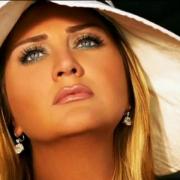Mohammad Reza Shajarian
Mohammad-Reza Shajarian (Persian: محمدرضا شجريان) (born 23 September 1940 in Mashhad, Iran) is an internationally and critically acclaimed Persian traditional singer, composer and ostad (master) of Persian music. He has been called "Iran's greatest living master of traditional Persian music." Shajarian is also known for his skills in Persian calligraphy, and humanitarian activities.
Shajarian started singing at the age of five, under the supervision of his father, and at the age of twelve, he began studying the traditional classical repertoire known as the Radif. Shajarian started his singing career in 1959 at Radio Khorasan, rising to prominence in the 1960s with his distinct style of singing. His main teachers were Ahmad Ebadi, Esmaeil Mehrtash, Abdollah Davami, and Nour-Ali Boroumand. He also learned the vocal styles of singers from previous generations, including Reza Gholi Mirza Zelli, Fariborz Manouchehri, Ghamar Molouk Vaziri, Eghbal Azar, and Taj Isfahani. When giving a lecture at California State University, Sacramento on March 2, 2012, he was asked what teacher was most influential to his development, and he cited legendary Iranian tar musician Jalil Shahnaz, indicating that Shahnaz' playing style was what he most tried to mimic with his own singing style.
Shajarian has collaborated with Parviz Meshkatian, Mohammad Reza Lotfi, Hossein Alizadeh, and Faramarz Payvar. He is recognised as skilled singer in the challenging traditional Dastgah style. In 1999 UNESCO in France presented him with the Picasso Award and in 2006 with the UNESCO Mozart Medal.
Early work
Shajarian studied singing at the early age of five under the supervision of his father, and at the age of twelve, he began studying the traditional classical repertoire known as the Radif. Shajarian started his singing career in 1959 at Radio Khorasan, rising to prominence in the 1960s with his distinct style of singing. Since then his career has included teaching at Tehran University's Department of Fine Arts, working at National Radio and Television, researching Iranian music, and making numerous recordings.
Music bands
Shajarian has not always been in music groups, but he currently does the vocals for the Masters of Persian Music with his son Homayoun Shajarian, as well as two other ostads, Kayhan Kalhor and Hossein Alizadeh. He also performs with his daughter Mozhgan Shajarian.
In 2008, he toured the world with the Ava Ensemble, composed of his son Homayoun (tombak and vocals), Hossein Behroozinia (barbat), Majid Derakhshani (tar), Hossain Rezaeenia (daf), and Saeed Farajpouri (kamanche).
In 2012, he toured with the Shahnaz Ensemble with his daughter Mojgan Shajarian and other band members. The ensemble is named after master tar musician Jalil Shahnaz, with a percentage of the proceeds going towards supporting his health care needs.
Significant Works
At a concert in London :
Raast-Panjgaah concert with Mohammad Reza Lotfi in Raast-panjgaah (1976).
Be yaad e Aaref with Mohammad Reza Lotfi in Bayaat e Turk (1986).
Sepideh Album with Mohammad Reza Lotfi and the Sheydaa Ensemble in Maahoor.
Bidaad with Parviz Meshkatian and the Aref Ensemble in Homaayoun (1985).
Aastaan e Jaanaan with Parviz Meshkatian and Naaser Farhangfar in Sur (1982).
Nava - Morakkab Khani with Parviz Meshkatian and the Aref Ensemble in Navaa, Se-gaah and Dashti (1986).
Dastan with Parviz Meshkatian and the Aref Ensemble in Chahaar-Gah (1987).
Dastgah Chahargah (live version of Dastan) concert with Parviz Meshkatian and the Aref Ensemble recorded live in Bonn (1987)
Cheshmeye Noush with Mohammad Reza Lotfi in Raast-panjgaah.
Shab, Sokoot, Kavir with Keyhan Kalhor based on the folk music of Khorasan (2000).
Without you with the Masters Ensemble in Navaa and Bayaat e Kord (2002).
Faryaad with the Masters Ensemble in Raast-panjgaah (2003).
Eshgh Daanad with Mohammad Reza Lotfi in Aboo Ataa (1981).
Chehre be Chehre with Mohammad Reza Lotfi in Navaa (1977).
Serr-e-Eshgh with Parviz Meshkatian and Mohammad Mousavi in Maahoor.
Doud-e-Oud with Parviz Meshkatian and the Tehran Symphonic Orchestra in Navaa (1987).
Zemestaan Ast with Hossein Alizadeh and Keyhan Kalhor in Maahoor and Homaayoun (1999).
Dar Khiaal with Majid Derakhshani in Segaah (1995).
Night Silence Desert, with Kayhan Kalhor. Traditional Crossroads, 2000
Masters
Shajarian studied with Esmaeil Mehrtash, Ahmad Ebadi, and Nour-Ali Boroumand and learned the vocal styles of previous generations of singers such as Seyed Hossein Taherzadeh, Reza Gholi Mirza Zelli, Ghamar Molouk Vaziri, Eghbal Azar, and Taj Isfahani. He started playing the santour under the instruction of Jalal Akhbari in order to better understand and perform the traditional repertoire. In 1971, he was introduced to Faramarz Payvar and took santour lessons with him. Shajarian also learned Abolhasan Saba's vocal radif from Payvar. He also studied under the guidance of master Abdollah Davami, from whom he learned many early Persian songs. Abdollah Davami also passed on to Shajarian his own interpretation of the Radif.
Bam Art Garden project
After the 2003 Bam earthquake, Shajarian initiated a project to help the people of Bam. He also performed concerts in support of people of Bam.
Political protest
Shajarian's Bidaad album was recorded after a three year hiatus from commercial recording. The lyrics of the album speak of a wonderful place having been reduced to shambles and bloodshed, in which he sings in sadness "what happened?". When giving a lecture at California State University, Sacramento on March 2, 2012,he was asked what the lyrics of this song meant. His response made it clear that he chose these lyrics based on what happened to the Iranian regime in the aftermath of the revolution - a once beautiful country being reduced to shambles. This is widely considered his first commercial recording meant to represent the voice of an oppressed people in Iran.
Shajarian has indicated support for Iranians protesting against the 12 June 2009 Iranian presidential election results. When Iran's president, Mahmoud Ahmadinejad referred to the protesters as "dust and trash", Shajarian told a BBC BBC Persian channel telephone interviewer that he (Shajarian) considered himself the voice of dust and trash: "It is the voice of dust and trash and it will always remain the voice of dust and trash." He also asked IRIB (Islamic Republic of Iran Broadcasting) to stop broadcasting his songs. He mentioned that his famous song "Iran, Ey Saraye Omid" (Iran, the land of Hope), has no relation with the current situation of his country.
Lyrics of his song "Language of Fire," issued in September 2009, — "Lay down your gun, Come, sit down, talk, hear. Perhaps the light of humanity will get through to your heart too" — are thought by some observers to speak "directly to the plainclothes Basiji militiamen and security forces" who beat protesters during recent unrest.
Creation of New Musical Instruments
Shajarian has led the invention of many new Iranian classical music instruments, many of which were showcased in his 2012 concert tour with the Shahnaz Ensemble. Among these instruments are the kereshmeh, the saboo, the saghar, the sorahi, and the tondar.
Awards and distinctions
One of NPR's 50 great voices. (2010)
Nushin medal (2008)
The UNESCO award - the UNESCO Mozart Medal (2006)
Nominated for Grammy award in Best World Music (2006)
Nominated for Grammy award in Best World Music (2004)
Iran’s best classical vocalist (2000)
Golden Picasso Medal (1999), one of UNESCO's highest honors
National radio and television golden cup (1977)
Prize presented by Turkish parliament speaker (1976)
Notable students
Ali Jahandar
Mohsen Keramati
Mozaffar Shafiei
Ghassem Rafati
Hamid Reza Noorbakhsh
Homayoun Shajarian
Iraj Bastami
Mojgan Shajarian
Shahram Nazeri
Hesamoddin Seraj
Sina Sarlak













